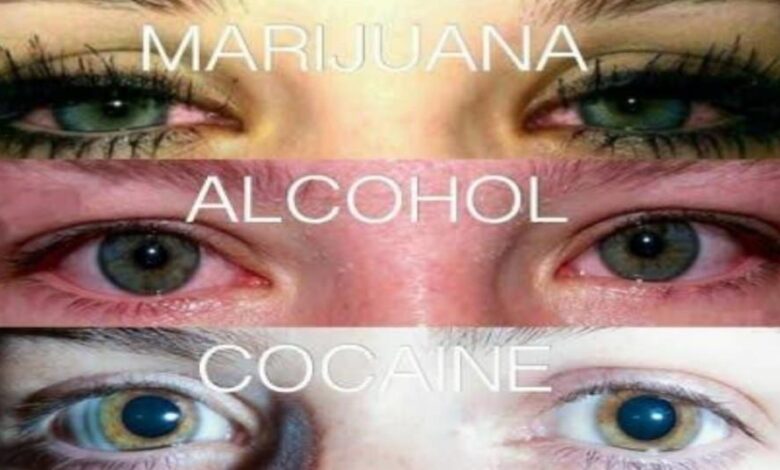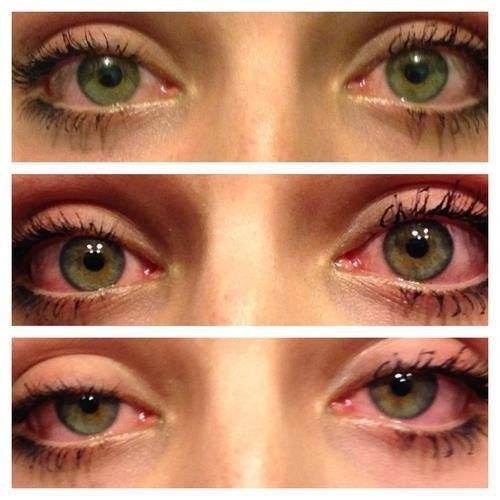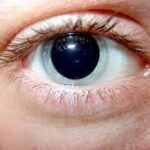What Does High Eyes Look Like?

What is a high eye?
A high or “stoned” eye refers to the appearance of the eye after people use a psychoactive substance that makes them feel relaxed and happy, while another may feel anxious and nauseous. Oftentimes, people who notice a change in someone may second-guess their initial perception. As part of this process of doubting, people may attribute the concerning behavior to fatigue, illness, or even just an off mood.
Examples of psychoactive substances that can affect the eye include caffeine, alcohol, cocaine, LSD, nicotine, and cannabis. Classes of drugs frequently used recreationally include Stimulants, which activate the central nervous system. These are used recreationally for their euphoric effects. Studies have shown that there is a myriad of changes that can be produced in the eye by toxic drugs ranging from mild/no symptoms to a severe loss of vision from endophthalmitis.

What does a high eye look like?
When a person is high on a particular psychoactive substance, the appearance of the eyes can be different from when he or she is high on another substance that produces euphoric effects.
Changes in the eye’s general color or motion can show intoxication. Bloodshot eyes are a common symptom of intoxication from several drugs, especially alcohol, cocaine, and marijuana; these occur because blood vessels in the eyes expand. Other drugs may cause the eyes to water, the eyelids to become heavy, or the pupils to change size; in fact, pinpoint pupils are a symptom of opioid intoxication and overdose.
According to the American Addiction Centers, nearly every substance of abuse can cause changes in the eyes. Below are specific changes in pupils, eye motion, or vision that can indicate intoxication or overdose from specific substances as listed by the center.
- Alcohol: Intoxication can cause double vision or blurry vision.
- Amphetamines: Ecstasy, Molly, MDMA, and similar drugs can cause blurred vision and changes in pupil size. The drugs can also cause rapid quivering of the pupils (nystagmus).
- Benzodiazepines: Like alcohol, at recreational doses, these medications can cause altered, double or blurry vision. Dilated pupils are a sign of an overdose.
- Cigarettes: Smoking in general, and smoking cigarettes in particular, can lead to cataracts of the crystalline lens – an area of the eye that produces one-third of the image the brain processes by focusing light onto the retina.
- Cocaine and crack cocaine: As the drug stimulates the brain and releases endorphins and adrenaline, the body will react by dilating the pupils. Symptoms of overdose include hallucinations, including visual hallucinations.
- Dextromethorphan: A common cough-suppressing ingredient in cold and flu medicines, this substance can cause intoxication. A symptom of DXM abuse is rapid, involuntary eye movements called nystagmus.
- GHB: A depressant sometimes called liquid ecstasy, GHB can be abused by putting the drug in eyes using eye drops. It is, however, more commonly mixed into a drink and consumed orally. The drug also causes hallucinations.
- Hallucinogens: Mescaline, LSD, and other, similar drugs cause the pupils to dilate. The user experiences hallucinations, which may be visual.
- Heroin: This narcotic can cause drooping eyelids due to sleepiness. The drug will also cause the pupils to constrict, leading to pinpoint pupils.
- Inhalants: Abusing substances like paint thinner or nitrous in canisters can lead to watering and red eyes as a sign of intoxication.
- Ketamine: Rapid, involuntary eye movement and dilated pupils are symptoms of intoxication from this narcotic-like drug. Ketamine can also cause visual impairment, like alcohol.
- Marijuana: Bloodshot eyes are one of the most common side effects of marijuana intoxication.
- Methamphetamine: One of the symptoms of methamphetamine intoxication is rapid eye movements – movements that are usually about 10 times faster than average eye movement.
- Narcotics: Both legal and illicit narcotic drugs – including heroin, hydrocodone, morphine, and fentanyl – constrict the pupils. At high doses, one of the symptoms of overdose is pinpoint pupils that do not respond to changes in light.
- PCP (phencyclidine): Rapid eye movements that are involuntary. A person intoxicated on PCP may also develop a blank stare, during which they do not respond to direct visual stimuli.
- Poppers: These can cause irreversible vision loss, potentially due to brain damage, but also due to maculopathy.
Conclusion
Your eyes and vision are one of the most precious senses you have. An eye problem triggered by recreational drug use can have a huge impact on your overall well-being. Most eye problems can be easily solved. Forget what you read on Reddit, be sure to see your eye doctor if an eye problem occurs after drug use.





